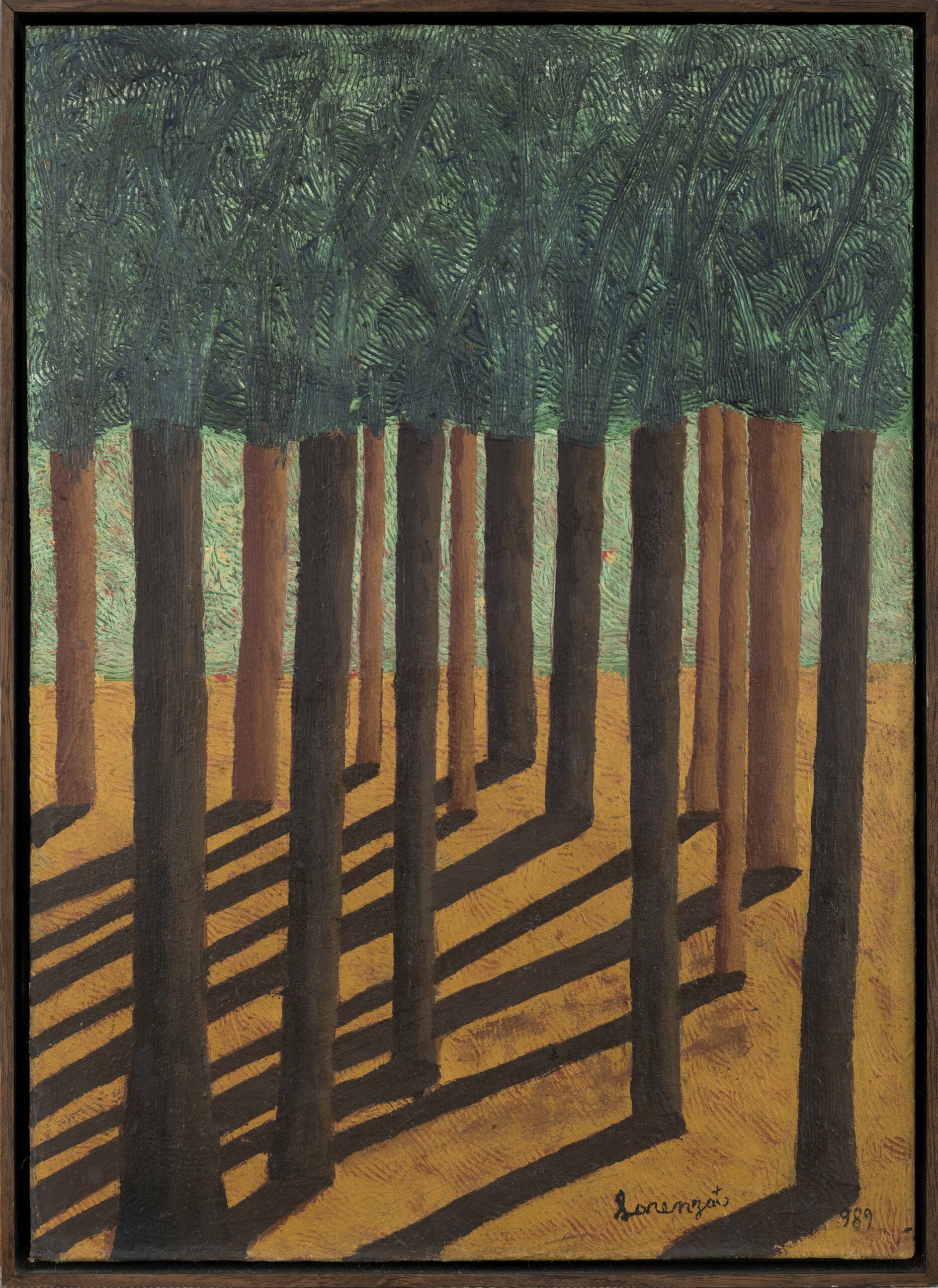Lorenzato
Amadeo Luciano Lorenzato (Belo Horizonte, MG, 1900-1995), an artist from an Italian and working-class family, worked for decades in construction as a wall painter and decorative painter, carrying the legacy of this profession later into his work as a visual artist. This previous experience was fundamental for the development of innovative painting techniques, such as the use of textures created with construction tools, giving a sense of movement to his compositions. The artist also used mineral paints over a layer of whitewash, a substance commonly used in exterior paintings that makes the colors more vivid and luminous.
Among the themes explored by Lorenzato, landscapes stand out, but his still lifes, portraits, and scenes of daily life are also notable, often treated with a geometric approach.
The artist lived in different European cities for about thirty years. During this period, he studied at the Reale Accademia delle Arti in Vicenza, Italy; traveled by bicycle through Eastern Europe; and worked as a laborer in the assembly of the Exposition Coloniale Internationale in Paris, where he met artists and avant-garde movements. Lorenzato returned to Brazil in the 1940s, a period from which his earliest known works date.
Among the main exhibitions of Lorenzato's career are his participation in the 3rd Triennale of Bratislava and a group show at the Petit Palais in Paris, both in 1973, and a solo exhibition at the Casa dos Contos in Belo Horizonte in 1984. Notable posthumous exhibitions include: Lorenzato and the Colors of Everyday Life, Museum of Art of Pampulha (1995); 100 Years of Lorenzato, Casa dos Contos and Gallery of the Guignard School (2001); and the group show Minimum Common Multiple at the Pinacoteca of São Paulo (2018). In 2019, exhibitions on the artist were organized by international galleries based in London and New York.






